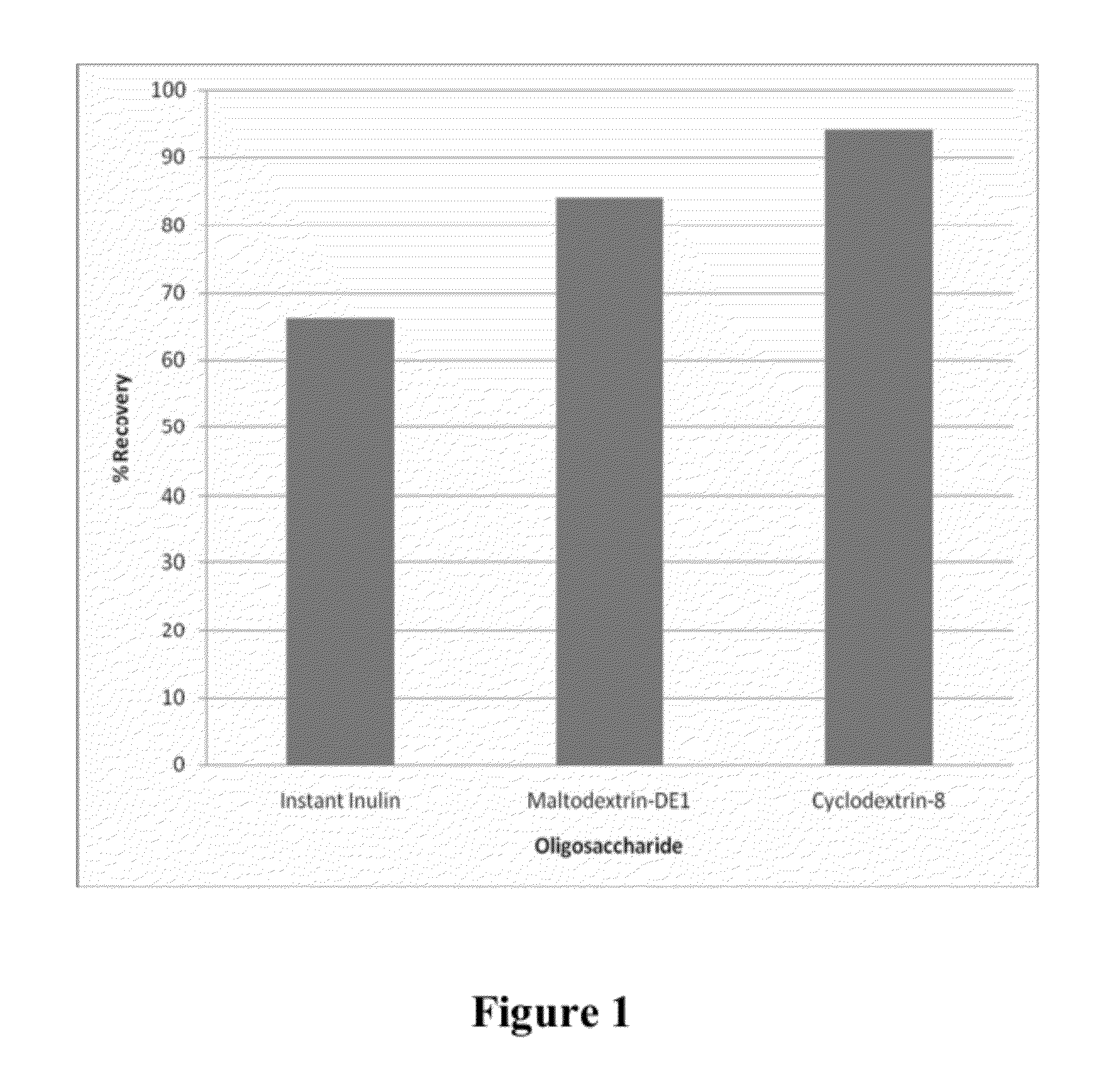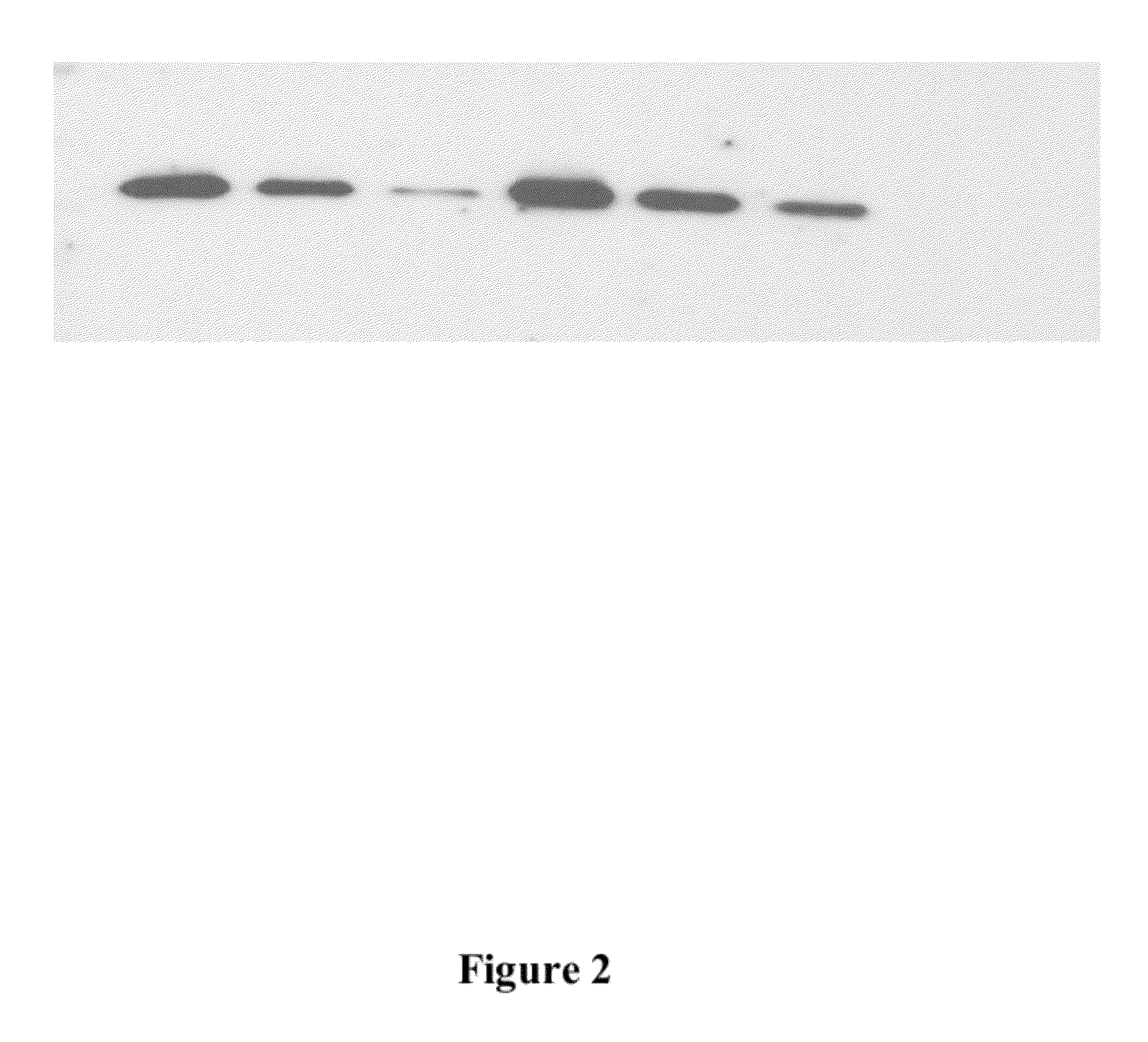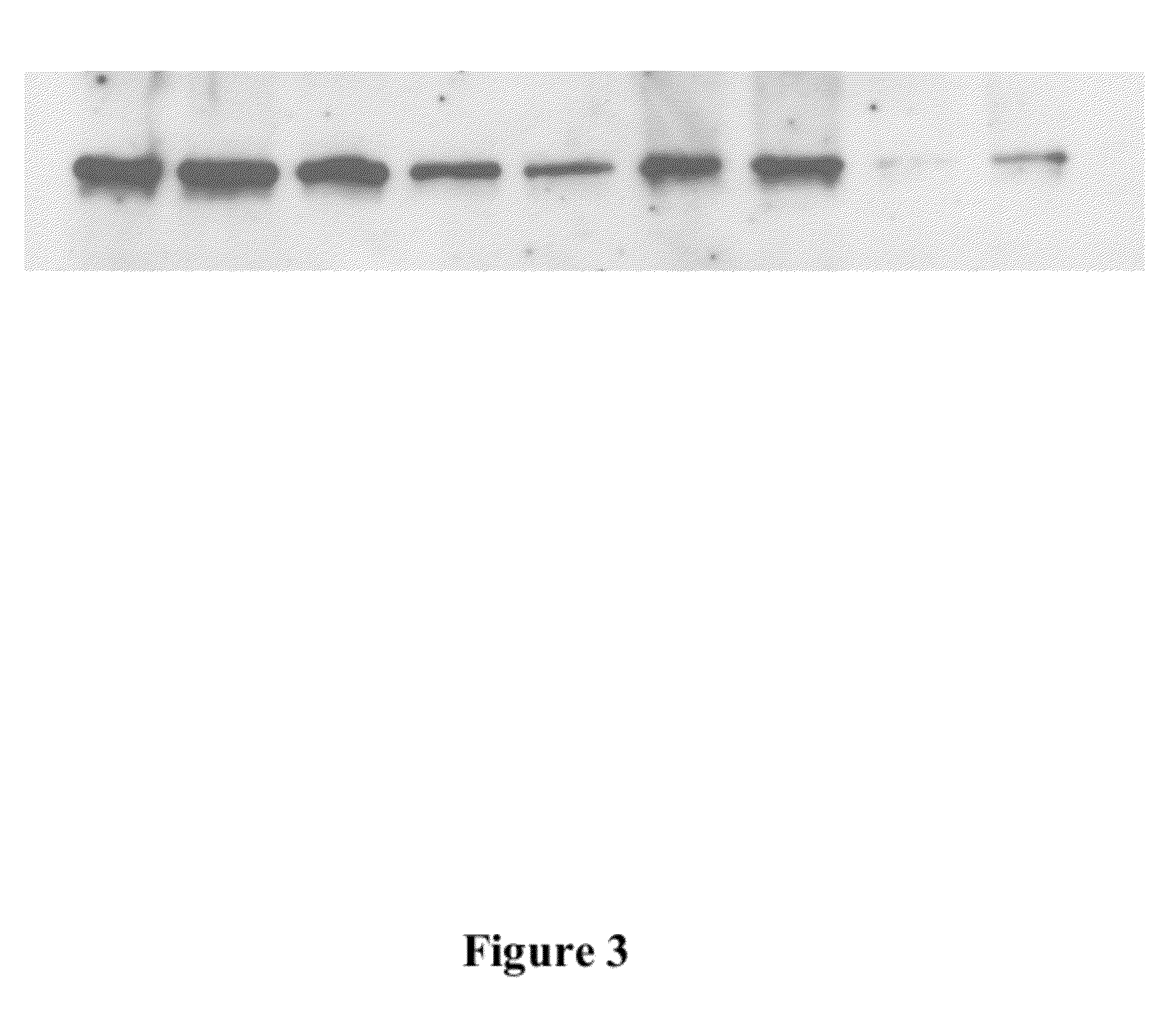Compositions and methods for encapsulating vaccines for the oral vaccination and boostering of fish and other animals
a technology for encapsulating vaccines and fish, which is applied in the direction of antibody medical ingredients, drug compositions, immunological disorders, etc., can solve the problems of ineffective orally delivered bacterin or subunit vaccines, and significant problems
- Summary
- Abstract
- Description
- Claims
- Application Information
AI Technical Summary
Benefits of technology
Problems solved by technology
Method used
Image
Examples
example 1
[0056]Production of a bioadhesive delivery system containing egg ovalbumin antigen. High DE chitosan (>80%, Sigma, St. Louis, Mo.), (3 gram) was dissolved in 100 ml of 0.5N acetic acid at 50° C. Twenty (20) gram Instant Inulin (Cargil, Minneapolis, Minn.) or twenty (20) gram maltodextrin DE1 or twenty (20) gram cyclodextrin were added to make an acidic slurry. Three (3) gram soy lecithin (Archer-Daniels-Midland Co., Decatur, Ill.) were added to the acidic slurry and allowed to complex under continuous mixing with the chitosan solution for 30 min. The pH of the acidic complex slurry was then adjusted to 5.8 with sodium hydroxide and the slurry allowed to cool down to room temperature. A 10 ml solution containing 100 mg egg ovalbumin and 100 mg beta glucan (Sigma) was admixed in the slurry and the slurry extruded through 21G needle into a 50 ml solution containing 10% w / w sodium triphosphate, 40% w / w sucrose and 20% isopropanol to form hydrogel strings. After about 2 hours of hardenin...
example 2
[0057]Production of Bioadhesive Particles containing Salmonid Rickettsial Septicaemia (SRS) Vaccine. Complex slurry at pH 5.8 (100 ml) was prepared as described in Example 1. Ten (10) ml solution containing attenuated SRS vaccine (5×1011 / ml SRS killed bacteria) without adjuvant (commercially available from the vaccine manufacturer) was mixed with 100 mg beta glucan and mixed in the chitosan solution). The slurry was then extruded into 50 ml cross linking solution as described in Example 1. The hydrogel strings were allowed to harden for 3 hour and then harvested from the solution and freeze-dried over night and milled to a particle size below 200 microns. FIG. 2 depicts a Western blot gel chromatography analysis showing the recovery of various amounts of SRS antigen from a freeze dried chitosan powder relative to its amount in the chitosan slurry before freeze drying. The analysis demonstrates that the antigen retained its immunogenicity and activity within the chitosan matrix and w...
example 3
[0058]Animal feed containing Immunogenic Microparticles for oral delivery. Fifteen (15) grams of dry immunogenic microparticles prepared as in Example 1 and 2 were mixed with 30 g of fish oil. The oily mixture is sprayed on 1 kg of standard commercial feed for animal including fish, livestock, and chicken or companion animal. FIG. 3 depicts a Western blot gel chromatography analysis showing the recovery of the antigen from fish feed relative to a similar amount in PBS buffer. The analysis demonstrates that the antigen retained its immunogenicity and activity throughout the encapsulation process and coating on fish feed.
PUM
| Property | Measurement | Unit |
|---|---|---|
| Fraction | aaaaa | aaaaa |
| Fraction | aaaaa | aaaaa |
| Fraction | aaaaa | aaaaa |
Abstract
Description
Claims
Application Information
 Login to View More
Login to View More - R&D
- Intellectual Property
- Life Sciences
- Materials
- Tech Scout
- Unparalleled Data Quality
- Higher Quality Content
- 60% Fewer Hallucinations
Browse by: Latest US Patents, China's latest patents, Technical Efficacy Thesaurus, Application Domain, Technology Topic, Popular Technical Reports.
© 2025 PatSnap. All rights reserved.Legal|Privacy policy|Modern Slavery Act Transparency Statement|Sitemap|About US| Contact US: help@patsnap.com



